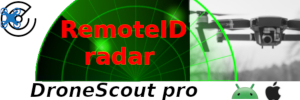Interesting, I thought a VO was NOT a sustitute for the PIC. I suppose the VO would have to hold a part 107 also? wouldnt make sense if not.....
Maybe this only applies to hobby pilots?
From the FAA;
Although the FAA believes the statutory definition of a model aircraft is clear,
the FAA provides the following explanation of the meanings of “visual line of sight” and
“hobby or recreational purpose,” terms used in the definition of model aircraft, because
the FAA has received a number of questions in this area.
By definition, a model aircraft must be “flown within visual line of sight of the person operating the aircraft.” P.L. 112-95, section 336(c)(2).1 Based on the plain
language of the statute, the FAA interprets this requirement to mean that: (1) the aircraft
must be visible at all times to the operator; (2) that the operator must use his or her own
natural vision (which includes vision corrected by standard eyeglasses or contact lenses)
to observe the aircraft; and (3) people other than the operator may not be used in lieu of
the operator for maintaining visual line of sight. Under the criteria above, visual line of
sight would mean that the operator has an unobstructed view of the model aircraft. To
ensure that the operator has the best view of the aircraft, the statutory requirement would
preclude the use of vision-enhancing devices, such as binoculars, night vision goggles,
powered vision magnifying devices, and goggles designed to provide a “first-person view” from the model.2 Such devices would limit the operator’s field of view thereby
reducing his or her ability to see-and-avoid other aircraft in the area. Additionally, some
of these devices could dramatically increase the distance at which an operator could see
the aircraft, rendering the statutory visual-line-of-sight requirements meaningless.
Finally, based on the plain language of the statute, which says that aircraft must be
“flown within the visual line of sight of the person operating the aircraft,” an operator
could not rely on another person to satisfy the visual line of sight requirement. See id.
(emphasis added). While the statute would not preclude using an observer to augment the
safety of the operation, the operator must be able to view the aircraft at all times.
1. For purposes of the visual line of sight requirement, “operator” means the person manipulating the model aircraft’s controls.
2. The FAA is aware that at least one community-based organization permits “first person view” (FPV) operations during which the hobbyist controls the aircraft while wearing goggles that display images transmitted from a camera mounted in the front of the model aircraft. While the intent of FPV is to provide a simulation of what a pilot would see from the flight deck of an unmanned aircraft, the goggles may obstruct an operators vision, thereby preventing the operator from keeping the model aircraft within his or her visual line of sight at all times.








